TEA TIME
Synthesizing mundane rituals into an experiential art exhibit.
Team
Yongzhi Li and Yimeng Hou
Role
Experience and Interaction Designer
Tools
Tinkercad, Photoshop, Miro
Ambient Computing Design // Two Weeks
TLDR: The environment and the human are symbiotic.
The mundane is magical
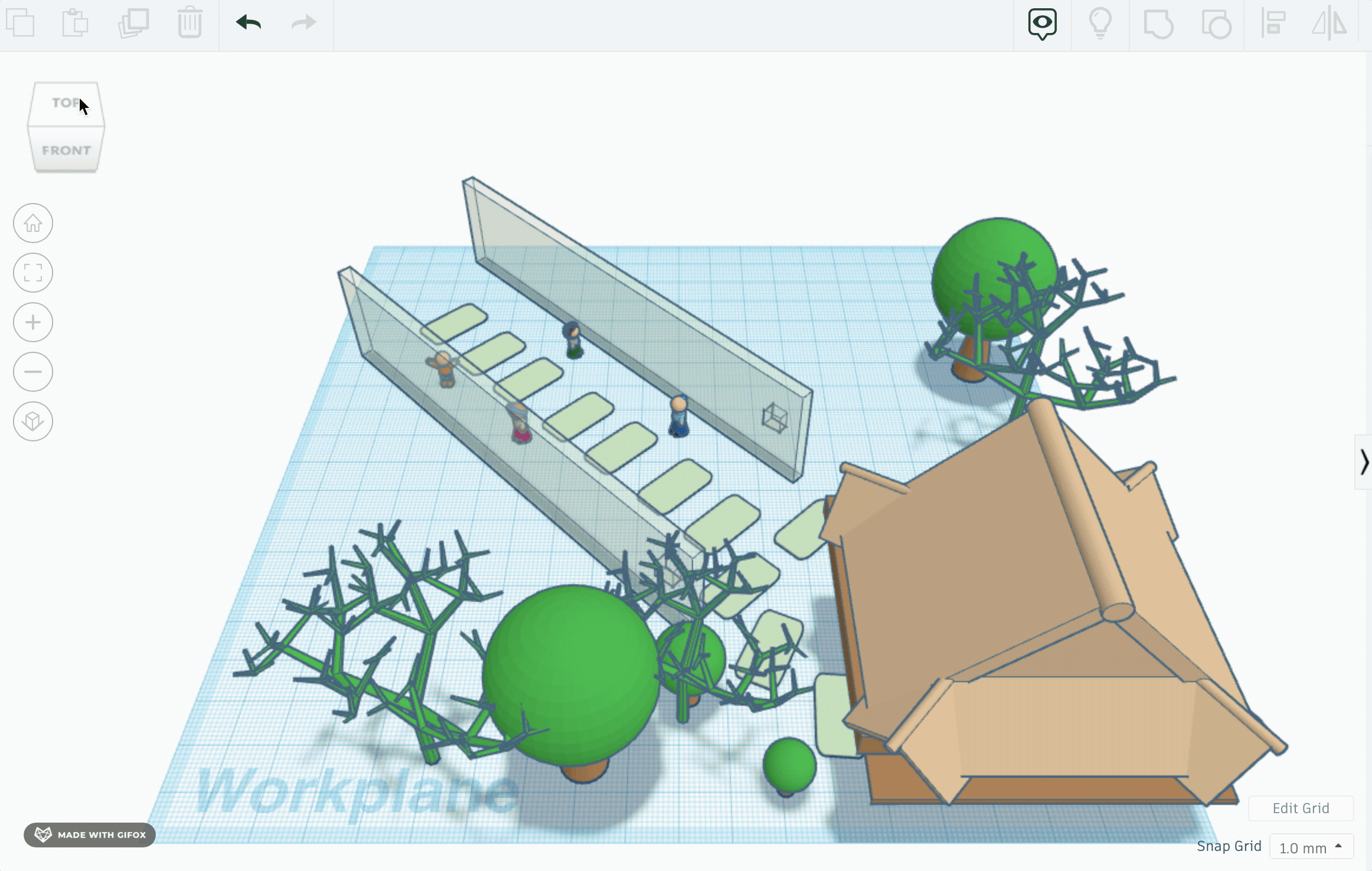
Project Overview

Problem Space
How might we elevate and transform a mundane daily ritual into an experiential art exhibit? How could ambient computing make this a seamless experience? Rather than abrupt notifications or jarring sounds, how can technology gently guide a participant though the experience.
Individual Ideation
The mundanity of maintaining good indoor lighting.
In a place like Seattle where the sky changes every hour, the battle to adjust curtains and blinds was chosen for its affect to priority ratio. High affect, low priority.
A majority of people don't notice or appreciate the lighting in their space unless it's exceptional in some way, but it can make a substantial difference in our mood. This is the perfect space for automation.
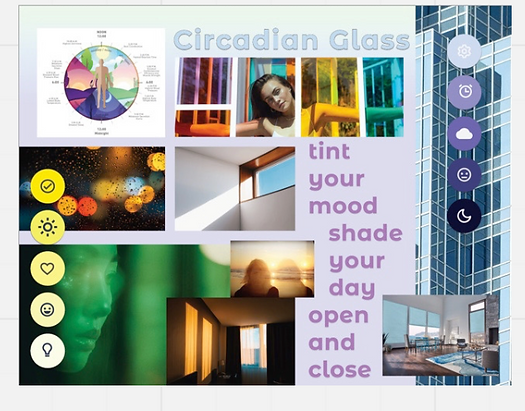

Group Ideation
As a team, we put our ideas together and discussed the experience of each: pet toy organizer, circadian glass, and auto tea machine.
After considering the space for an interactive experience, we decided to elevate the mundanity of tea-making since it involves more human operating behaviors.


Research
After secondary research and interviewing was complete we established three human profiles to represent the intended tea ceremony audience. Traditionalist, utilitarian, and the unexperienced.
Afterwards, a traditional Japanese tea ceremony was observed and we considered ways in which various schemas could coalesce to guide traditionalists, utilitarians and the unexperienced through an exhibit in an ambient way with a focus on intentionality of time.
For ambient computing, attaching schemas to the experience can help participants organically blend into the built environment. Schemas for consuming tea can be significantly different depending on environmental factors, accepted manners, and philosophical values that people associate with drinking tea.
In many cultures, schemas around tea consumption consists of a set of intentional actions. Offering of the tea, the preparation and cleansing, bringing the cup to your mouth, savoring each moment, and gratitude. However, in other cultural settings chugging it, throwing the cup away, and getting more is the standard.
Growing the Concept
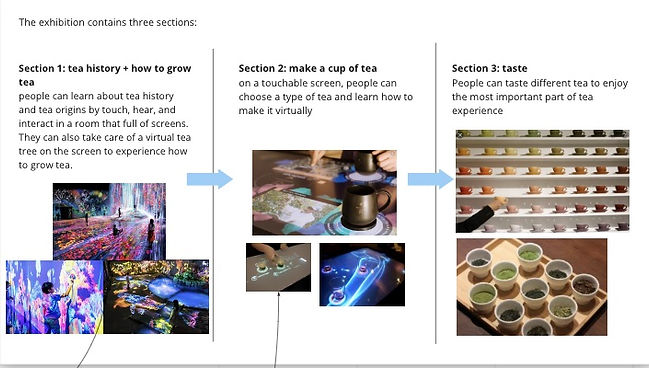


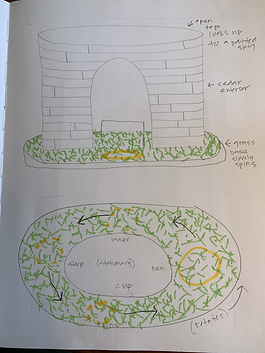

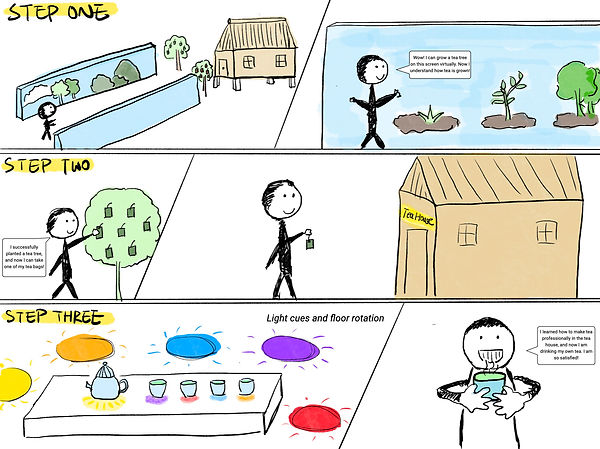
Prototyping

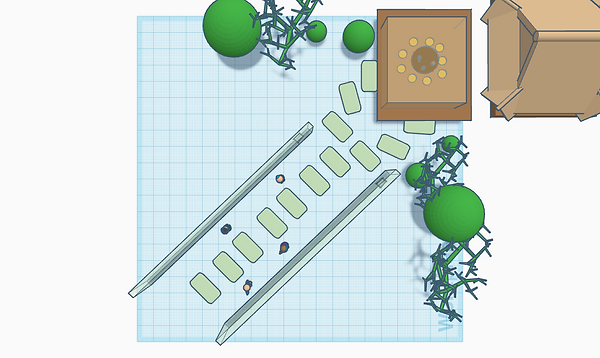
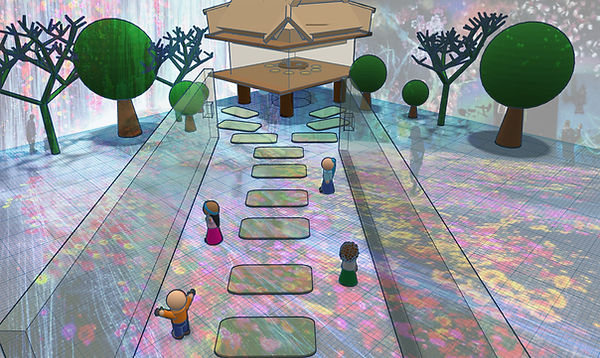
High-level Concept
Enter The Room of Rumination, where you'll smell your way through tea leaves and blends.
There is directional lighting in the ground. The room is dark but warm, all accessories of the installation are black except for dimly lit circles that mark the perimeter of each canister containing dried tea. This diminishes distractions and creates a focus on intentional smelling. Some teas offered are very modern and some have great cultural and historical significance - you don't know the difference yet. After choosing the tea you're most curious about you'll take a paper tea tag from the display.
Enter into the main exhibit. Your paper tea tag is scanned as you walk into the open corridor that leads to Tea Time. Walking through the corridor your movement initiates and guides an anatomy and origin story of the tea you've chosen. This is displayed and projected on the wall, as you walk closer to Tea Time the story unfolds. Your tea's story blends with the stories people near you are experiencing. Once you're at the the end, it's time for tea.
The tea you've selected is waiting at the entrance of the tea house. Once you enter, you sit in the first seat. The floor very gently rotates your body through the ceremony. You're guided through each step by gentle glowing lights on the stationary table, and the occasional subtle sound. The goal is that each step requires only intention. The slow pace is uncomfortable for some and needed for others.
-
Start by cleansing each tool, including the tea bowl and whisk. Notice each item and appreciate it for its capability. You respect each item enough to care for it through cleansing.
-
Prepare and whisk or saturate the tea in the tea bowl. Notice your work, how your actions have an effect, how able your efforts are.
-
Drink slowly, observe surroundings. Be thankful. Pay attention to your tea, it used to be seeds - imagine it's life-story, where it's traveled from. Let your mouth appreciate it.
-
Cleanse each tool. Your work is a thank you note.
-
Depart or go around again.
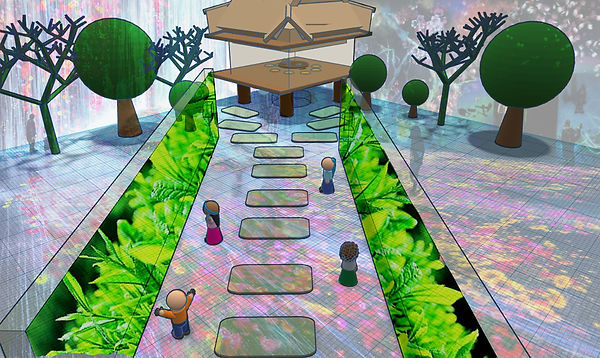
"I see aspects from the original concepts coming through. The essence of the pet organizer, that of orderliness, and the correct timing of events weaves into the orderliness of the tea ceremony as well as into the step-by-step growth over time of the tea itself. Likewise, I see the transformative aspect of the Circadian Glass in the hallway of tea growth as you approach the tea house. Here again is the concept of time as an integral and important element in the exhibit." Professor Justin Lund, University of Washington
Takeaways
By looking for wider themes among initial ideas we were able to find deeper inspiration for the final concept. The infusion of broad parallel themes created a more meaningful experience for the participant and utilizing established schemas allowed for a more ambient experience.